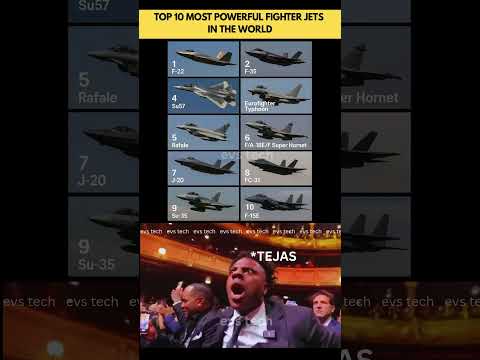
Global Fighter Jets Market: Trends, Forecasts, and Strategic Insights (2024-2030) 2025
Table of Contents
- Executive Summary
- Market Overview and Dynamics
- Key Market Drivers
- Emerging Technologies and Innovations
- Regional Market Analysis
- Competitive Landscape
- Procurement and Modernization Programs
- Market Challenges and Risks
- Forecasts and Growth Projections (2024-2030)
- Strategic Recommendations
- Sources & References
Executive Summary
The global fighter jets market is poised for notable expansion in 2025 and the ensuing years, driven by geopolitical tensions, technological advancements, and ongoing fleet modernization initiatives. Major economies are ramping up defense spending, with the United States, China, India, and several NATO members leading procurement and research efforts. According to a 2024 market analysis, the global fighter aircraft market is projected to grow from $55.2 billion in 2024 to an estimated $67.6 billion by 2029, reflecting a compound annual growth rate (CAGR) of 4.1% over the forecast period (www.marketsandmarkets.com).
In 2025, demand is expected to be particularly robust for advanced 4.5 and 5th-generation fighters such as the F-35 Lightning II, Dassault Rafale, and the Su-57, with procurement contracts already in place across North America, Europe, the Middle East, and the Asia-Pacific. The F-35 program continues to dominate the market, with Lockheed Martin reporting increased production rates and expanded international orders, including from Finland, Switzerland, and Germany (www.lockheedmartin.com).
The Asia-Pacific region is forecast to be the fastest-growing market segment due to rising defense budgets and regional security concerns, particularly involving China and India. India’s ongoing MMRCA (Medium Multi-Role Combat Aircraft) procurement and Japan’s F-X stealth fighter project underscore the region’s commitment to air superiority (www.defensenews.com). Meanwhile, Middle Eastern states such as Saudi Arabia and the UAE are also pursuing advanced fighter acquisitions to modernize their air forces (www.flightglobal.com).
Market growth is further supported by ongoing investments in next-generation platforms, including sixth-generation fighter programs in the U.S. (NGAD), Europe (FCAS and Tempest), and China. These programs, though not expected to enter service until the 2030s, are driving substantial R&D investment and shaping market outlook in the near term (www.janes.com).
In summary, the fighter jets market in 2025 is characterized by escalating demand, technological innovation, and significant international competition, setting the stage for sustained growth and transformation in the coming years.
Market Overview and Dynamics
The global fighter jets market is poised for significant growth in 2025 and the coming years, driven by heightened geopolitical tensions, rapid technological advancements, and increasing defense budgets among major economies. According to recent projections, the market is expected to expand from approximately $61.6 billion in 2023 to around $70 billion by 2029, registering a compound annual growth rate (CAGR) of about 3.8% during this period (www.mordorintelligence.com).
One of the primary drivers shaping market dynamics is the modernization of air forces across the globe. The United States remains the largest spender, with ongoing procurement of advanced platforms such as the F-35 Lightning II. In 2025, deliveries of new F-35 variants to NATO allies and partners are set to continue at a robust pace, reinforcing the aircraft’s position as a market leader (www.lockheedmartin.com). Meanwhile, European countries are accelerating collaborations, most notably the Future Combat Air System (FCAS) involving France, Germany, and Spain, and the Tempest program led by the UK and Italy, both aiming for initial operational capability in the early 2030s (www.flightglobal.com).
Asia-Pacific is emerging as a key growth region, with China and India ramping up indigenous fighter jet development and procurement. China’s J-20 and FC-31 programs are advancing, while India is expanding its fleet with additional Rafale and indigenous Tejas jets (www.defensenews.com). The region’s market growth is propelled by security concerns in the South China Sea and Indo-Pacific.
Technological innovation is another significant dynamic. The integration of artificial intelligence, stealth technologies, and advanced avionics is becoming standard in new-generation fighters. Additionally, the proliferation of multi-role platforms capable of air superiority, ground attack, and electronic warfare is altering procurement strategies. Notably, the demand for fifth and upcoming sixth-generation fighters is fueling research and development investments globally (airforce-technology.com).
However, the market faces challenges such as lengthy development cycles, high unit costs, and export restrictions. Budget constraints, particularly in developing regions, may slow adoption rates. Despite these hurdles, the fighter jets market outlook for 2025 and beyond remains positive, underpinned by strategic requirements, ongoing modernization efforts, and evolving security landscapes worldwide.
Key Market Drivers
The fighter jets market in 2025 is shaped by a confluence of geopolitical, technological, and economic factors driving both demand and innovation. Several key market drivers are expected to exert significant influence over the industry’s trajectory in the current year and the immediate years ahead.
- Geopolitical Tensions and Defense Modernization: Rising geopolitical tensions, particularly in regions such as Eastern Europe, the Asia-Pacific, and the Middle East, continue to fuel defense spending. The ongoing Russia-Ukraine conflict, increased assertiveness by China in the South China Sea, and evolving security alliances are prompting nations to modernize air forces and invest in advanced fighter jets. According to www.sipri.org, global military expenditure reached a record $2.44 trillion in 2023, with a significant portion allocated to air superiority assets.
- Technological Advancements: The rapid integration of next-generation technologies—such as stealth, artificial intelligence, sensor fusion, and hypersonic weapons—is a critical driver. Demand for fifth- and sixth-generation fighters, including the Lockheed Martin F-35, the Russian Su-57, and upcoming programs like the Franco-German-Spanish Future Combat Air System (FCAS), is accelerating. These platforms promise increased survivability, network-centric warfare capabilities, and multirole flexibility, which are priorities for modern air forces www.flightglobal.com.
- Fleet Replacement Cycles: Many nations are facing urgent needs to replace aging fourth-generation aircraft such as the F-16, MiG-29, and Mirage 2000. This replacement cycle is pushing procurement programs and multi-billion-dollar contracts, particularly in the United States, Europe, and Asia. Market analysts at www.marketsandmarkets.com project the global fighter aircraft market to grow from $55.1 billion in 2023 to $66.6 billion by 2028, underscoring the impact of these modernization drives.
- Export Opportunities and Strategic Partnerships: Export demand remains strong, with countries such as India, Saudi Arabia, and several Southeast Asian states seeking to diversify suppliers and enhance indigenous production. Strategic collaborations and offset agreements are increasingly common, enabling technology transfer and local assembly, as seen in recent deals involving the F-35, Rafale, and Gripen platforms www.defensenews.com.
- Rising Budgets and Government Initiatives: Governments are prioritizing air power in their defense budgets. The U.S. FY2025 defense budget request includes continued procurement of advanced fighters, while European and Asian nations are increasing allocations to indigenous and joint fighter development programs www.defensenews.com.
Collectively, these drivers are expected to maintain robust growth in the fighter jets market through 2025 and beyond, with innovation and strategic realignment at the forefront of procurement and development strategies.
Emerging Technologies and Innovations
The fighter jets market is experiencing a surge of innovation as advanced technologies are rapidly integrated into next-generation platforms. In 2025 and the following years, the sector is defined by the push for superiority in stealth, artificial intelligence (AI), propulsion systems, and networked warfare. These advancements are not only shaping the capabilities of new aircraft but are also driving significant investments and international competition.
A central trend is the evolution of stealth technology. The latest fifth- and emerging sixth-generation fighters, such as the U.S. Air Force’s NGAD (Next Generation Air Dominance) and the U.K./Japan/Italy’s GCAP (Global Combat Air Programme), emphasize radar-evading designs, adaptive camouflage, and materials science breakthroughs. These platforms aim to reduce detectability across a broad electromagnetic spectrum, reflecting a demand for survivability in highly contested environments www.defensenews.com.
Artificial intelligence and autonomous systems are increasingly embedded in both piloted and optionally piloted fighter jets. AI co-pilots can assist with threat detection, mission planning, and even flight controls, as seen in test flights of the U.S. Air Force’s AI-enabled X-62A VISTA and the ongoing integration of AI into European fighters. AI enhances decision-making speed, reduces pilot workload, and paves the way for future unmanned combat air vehicles (UCAVs) acting alongside manned fighters www.airandspaceforces.com.
Propulsion technology is another area of rapid development. The introduction of adaptive cycle engines, such as General Electric’s XA100 and Pratt & Whitney’s XA101, promises greater fuel efficiency, extended range, and higher thrust. These engines are expected to be cornerstones of upcoming U.S. and allied fighter programs, enabling greater operational flexibility and survivability www.geaerospace.com.
Finally, the concept of “networked warfare” is redefining fighter jet roles. Advanced datalinks, secure communications, and sensor fusion allow jets to act as nodes in a larger combat cloud, sharing targeting data in real time and coordinating with drones and other platforms. The U.S. F-35, Rafale F4, and the upcoming Tempest and GCAP jets are all being designed with these digital capabilities at their core www.flightglobal.com.
With global defense budgets rising and renewed geopolitical tensions, demand for technologically advanced fighter jets is expected to grow robustly through 2030. The market outlook is shaped by these innovations, with Western, Asian, and Middle Eastern nations investing heavily in both indigenous programs and international partnerships www.fortunebusinessinsights.com.
Regional Market Analysis
The global fighter jets market is expected to experience robust growth in 2025 and the subsequent years, driven by rising geopolitical tensions, ongoing military modernization programs, and increased defense budgets across multiple regions. According to a recent industry report, the fighter jet market is projected to reach a value of approximately $62.1 billion by 2028, growing at a compound annual growth rate (CAGR) of 5.8% from 2023 through 2028 (www.marketsandmarkets.com).
- North America: The United States remains the largest market for fighter jets, fueled by ongoing procurement of advanced platforms such as the F-35 Lightning II and modernization of existing fleets. The U.S. Department of Defense’s FY2025 budget proposal includes substantial allocations for the acquisition and sustainment of fifth and sixth-generation aircraft (www.defensenews.com). Canada and Mexico are also making significant investments, with Canada finalizing its procurement of F-35s to replace aging CF-18s.
- Europe: European nations are bolstering their air forces in response to regional security threats, particularly following Russia’s actions in Ukraine. Countries such as Germany, Poland, and Finland are acquiring new fighters like the Eurofighter Typhoon and F-35. The Future Combat Air System (FCAS), a collaborative project among France, Germany, and Spain, is set to drive further demand in the latter half of the decade (www.flightglobal.com).
- Asia-Pacific: This region is witnessing the fastest growth, led by China’s development of the J-20 and J-31 stealth fighters, as well as India’s Tejas and the HAL AMCA program. Japan and South Korea are also upgrading their fleets and pursuing indigenous fighter projects to counter regional threats and reduce reliance on foreign suppliers (www.defensenews.com).
- Middle East: Gulf nations, particularly Saudi Arabia, the UAE, and Qatar, continue to invest heavily in advanced fighter jets amid ongoing regional rivalries. The UAE has expanded its F-16 fleet and is seeking to acquire F-35s, pending political negotiations (www.al-monitor.com).
- Rest of the World: Latin American and African markets remain limited due to budgetary constraints, though some countries are pursuing modernization through second-hand acquisitions and multirole platforms (www.janes.com).
In summary, the fighter jets market in 2025 and the near term will be shaped by heightened defense spending, technological advancements, and regional security challenges, with North America, Europe, and Asia-Pacific leading demand and innovation.
Competitive Landscape
The global fighter jets market is distinguished by intense competition among a handful of major defense contractors alongside the emergence of new players from Asia and the Middle East. As of 2025, the competitive dynamics are shaped by ongoing modernization programs, evolving defense doctrines, and surging geopolitical tensions. Leading manufacturers such as Lockheed Martin, Boeing, Dassault Aviation, Saab, and Sukhoi remain dominant, buoyed by substantial government-backed R&D and long-term procurement contracts. Notably, Lockheed Martin’s F-35 program continues to drive market share, with over 1,000 units delivered to multiple NATO and allied air forces, and sustained orders projected through the late 2020s www.lockheedmartin.com.
- United States: The U.S. maintains the largest market presence, with the F-35 and F-15EX programs dominating both domestic and foreign military sales. In 2025, the U.S. Air Force and Navy are expected to allocate significant portions of their budgets to next-generation fighter acquisitions www.defensenews.com.
- Europe: European defense firms, led by Dassault (Rafale) and Saab (Gripen), are leveraging regional defense initiatives like the Future Combat Air System (FCAS) and Tempest projects to compete with U.S. platforms. France and Germany have reaffirmed joint investments into FCAS, projecting initial operational capability by the early 2030s but ramping up development in the next few years www.reuters.com.
- Asia-Pacific: China’s Chengdu J-20 and Shenyang FC-31 are gaining traction, with increased deliveries to the People’s Liberation Army Air Force (PLAAF) and active marketing to regional allies. Similarly, India’s Tejas and Japan’s partnership with the UK/Italy on the GCAP (Global Combat Air Programme) signal growing indigenous capabilities and a desire to reduce reliance on Western suppliers www.janes.com.
- Middle East: Gulf states, particularly the UAE and Saudi Arabia, are aggressively pursuing advanced fighters, negotiating new F-35 contracts with the U.S. and exploring European and Asian alternatives in response to shifting export controls www.bloomberg.com.
Looking ahead, the competitive landscape will be shaped by stealth technologies, digital twin integration, and collaborative combat aircraft systems. The emergence of sixth-generation fighters and unmanned wingman concepts will intensify rivalry, with new entrants challenging the established Western and Russian dominance. Strategic partnerships, technology transfer agreements, and evolving security alliances are expected to further redefine market shares through 2030.
Procurement and Modernization Programs
The global fighter jets market in 2025 is characterized by robust procurement and modernization programs driven by evolving geopolitical dynamics, rapid technological advancements, and the need to replace aging fleets. Major defense spenders such as the United States, China, India, and European nations are prioritizing investments in next-generation fighters and upgrades to existing platforms, fueling market growth and shaping competitive dynamics through the remainder of the decade.
The United States continues to lead in both procurement and modernization. The F-35 Lightning II program remains central, with the U.S. Department of Defense requesting funds for 68 new F-35s in fiscal year 2025 and ongoing upgrades for Block 4 capabilities, which include advanced sensors and improved weapons integration. Meanwhile, the U.S. Air Force is also investing in the Next Generation Air Dominance (NGAD) program, which will influence procurement decisions later in the decade, potentially reshaping air superiority doctrines www.defensenews.com.
European procurement programs are accelerating in response to regional security tensions. Germany, France, and Spain are heavily investing in the Future Combat Air System (FCAS), aiming for a sixth-generation fighter prototype by 2027. The United Kingdom, Italy, and Japan are collaborating on the Global Combat Air Programme (GCAP), with a demonstrator expected by 2027 and entry into service in the mid-2030s. These initiatives are prompting modernization of existing Eurofighter Typhoon and Rafale fleets, with new orders and avionics upgrades scheduled through 2025 and beyond www.flightglobal.com.
Asia-Pacific nations continue to expand and modernize their air forces. India is advancing its procurement of 114 multi-role fighter aircraft, with contenders including the Rafale, F-15EX, and Su-35. China’s J-20 and J-31 stealth fighters are entering serial production, reflecting significant domestic investment. South Korea is progressing with its indigenous KF-21 Boramae program, targeting squadron-level deployment by 2028, while Japan is also upgrading its F-2 and F-15 fleets www.janes.com.
Looking ahead, modernization is expected to focus on integrating artificial intelligence, network-centric warfare capabilities, and hypersonic weapons. The global fighter jet market is forecast to grow from $46.2 billion in 2024 to $53.5 billion by 2029, driven by these procurement and upgrade programs www.marketsandmarkets.com. As these efforts accelerate, the competitive landscape will intensify, with manufacturers vying to meet evolving air combat requirements worldwide.
Market Challenges and Risks
The fighter jets market faces significant challenges and risks in 2025 and the coming years, shaped by evolving geopolitical, economic, and technological landscapes. One of the primary issues is the escalating cost of advanced fighter jet programs. For instance, the unit cost of flagship fifth-generation aircraft such as the F-35 Lightning II continues to rise, with recurring sustainment costs projected to exceed $1.3 trillion over its lifecycle, straining the budgets of even the largest defense buyers www.gao.gov. High acquisition and maintenance expenses can result in procurement delays, downsizing of planned fleets, or cancellations, particularly among nations with limited defense budgets.
Supply chain disruptions are another major risk, exacerbated by ongoing geopolitical tensions and the lingering effects of the COVID-19 pandemic. Lead times for critical components, such as advanced semiconductors and composite materials, have lengthened, impacting production schedules of major manufacturers like Lockheed Martin, Saab, and Dassault www.defensenews.com. This fragility not only threatens timely delivery but also increases costs and risks contract penalties.
Geopolitical instability further complicates the market outlook. Heightened tensions in regions such as Eastern Europe, the Middle East, and the Indo-Pacific are driving demand but also introducing risks of policy changes, export restrictions, and shifting alliances. For example, the imposition of arms embargoes or export controls—as seen in recent U.S. restrictions on certain Middle Eastern and Asian buyers—can abruptly alter market access and revenue streams for manufacturers www.reuters.com.
Technological advancements present a double-edged sword. While innovations such as stealth, artificial intelligence, and advanced avionics are critical for market competitiveness, they also raise research and development (R&D) costs and increase the risk of obsolescence. Moreover, integrating new technology into legacy platforms or multinational fleets can lead to interoperability issues and additional expenses www.flightglobal.com.
Finally, there is growing scrutiny of defense spending and environmental concerns. As governments prioritize sustainability and climate goals, the defense sector faces pressure to reduce emissions and adopt greener technologies—an area where fighter jets, with their significant carbon footprint, are under particular scrutiny www.rand.org. This could result in regulatory changes and additional compliance costs.
In summary, while demand for fighter jets remains robust, the market in 2025 and beyond is challenged by rising costs, supply chain vulnerabilities, geopolitical uncertainty, technological complexity, and increasing regulatory pressure, all of which require strategic adaptation by manufacturers and buyers alike.
Forecasts and Growth Projections (2024-2030)
The global fighter jets market is poised for significant growth between 2024 and 2030, driven by escalating defense budgets, modernization initiatives, and rising geopolitical tensions. According to www.fortunebusinessinsights.com, the fighter jet market was valued at approximately $55.9 billion in 2022 and is projected to reach $69.4 billion by 2029, representing a compound annual growth rate (CAGR) of 3.12%. Updated forecasts for 2025 and beyond consistently underline robust demand as nations prioritize advanced air combat capabilities.
- Modernization Programs: Major air forces, including those of the United States, China, and India, are investing heavily in the next generation of fighter aircraft. The U.S. is expanding its F-35 Lightning II program, with over 3,500 units planned for production, while European projects like the Future Combat Air System (FCAS) and the British-led Tempest are targeted for operational deployment in the early 2030s (www.defensenews.com).
- Rising Defense Budgets: The Stockholm International Peace Research Institute (SIPRI) reported record global military spending in 2023, with the US, China, and Russia among the top spenders (www.sipri.org). This trend is expected to continue through 2025 and beyond, directly fueling the procurement of both 4.5 and 5th generation fighters.
- Technological Advancements: Key growth drivers include the integration of stealth technologies, advanced avionics, and network-centric warfare capabilities. The introduction of artificial intelligence, unmanned teaming, and hypersonic weapons are further shaping procurement decisions and influencing market dynamics (www.mordorintelligence.com).
- Regional Demand: The Asia-Pacific region is forecast to witness the fastest growth, propelled by China’s indigenous fighter programs (J-20, FC-31), India’s Tejas and AMCA projects, and increased acquisitions by Southeast Asian nations. Meanwhile, Middle Eastern countries are upgrading fleets in response to ongoing security challenges (www.marketwatch.com).
Looking forward, the fighter jets market in 2025 and the following years will be shaped by continued investments in 5th and 6th generation platforms, strategic partnerships, and shifting regional security priorities. Despite potential supply chain disruptions and budgetary constraints in some economies, the overall outlook remains positive, with sustained growth anticipated through the end of the decade.
Strategic Recommendations
The fighter jets market in 2025 and the following years is poised for both expansion and transformation, driven by evolving security threats, rapid technological advancements, and shifting geopolitical alliances. For industry participants and stakeholders, a set of strategic recommendations emerges to effectively navigate this dynamic environment.
- Invest in Next-Generation Technologies: Leading air forces are prioritizing stealth, advanced avionics, artificial intelligence, and network-centric warfare capabilities. Manufacturers should accelerate R&D in sixth-generation platforms, incorporating advanced sensors, unmanned teaming, and electronic warfare suites, as seen with programs like the U.S. NGAD and Europe’s FCAS and Tempest initiatives (www.reuters.com).
- Enhance Global Partnerships and Supply Chains: With rising demand from Asia-Pacific, Eastern Europe, and the Middle East, forming joint ventures and local assembly partnerships can strengthen market access. Companies like Lockheed Martin and Saab have leveraged offset agreements and technology transfers to secure large contracts in India, Finland, and other markets (www.flightglobal.com).
- Respond to Geopolitical Realities: The Russia-Ukraine conflict and rising tensions in the Indo-Pacific are prompting nations to modernize air fleets urgently. Suppliers should prioritize flexible production, rapid delivery schedules, and upgrade packages for existing platforms to address both immediate and long-term defense needs (www.defensenews.com).
- Expand Aftermarket Services and Upgrades: As defense budgets face scrutiny, many operators favor upgrading legacy fleets (e.g., F-16, Rafale, Gripen) over new purchases. OEMs should offer modular upgrades, digitalization, and sustainment services to capture recurring revenue and build long-term relationships (www.janes.com).
- Emphasize Sustainability and Cost Control: Environmental considerations and cost-effectiveness are increasingly influencing procurement. Initiatives around fuel efficiency, synthetic fuels, and lifecycle cost reduction should be prioritized to appeal to budget-conscious and environmentally-aware customers (aviationweek.com).
By adopting these strategies, companies can secure competitive advantages and capitalize on the robust demand forecasted for fighter jets through 2025 and beyond, while also building resilience against geopolitical, regulatory, and technological disruptions.
Sources & References
- www.marketsandmarkets.com
- www.lockheedmartin.com
- www.defensenews.com
- www.flightglobal.com
- www.janes.com
- www.mordorintelligence.com
- airforce-technology.com
- www.sipri.org
- www.airandspaceforces.com
- www.geaerospace.com
- www.fortunebusinessinsights.com
- www.al-monitor.com
- www.reuters.com
- www.bloomberg.com
- www.gao.gov
- www.rand.org
- www.marketwatch.com
- aviationweek.com
This post Global Fighter Jets Market: Trends, Forecasts, and Strategic Insights (2024-2030) 2025 appeared first on Macho Levante.

A cybersecurity specialist with a passion for blockchain technology, Irene L. Rodriguez focuses on the intersection of privacy, security, and decentralized networks. Her writing empowers readers to navigate the crypto world safely, covering everything from wallet security to protocol vulnerabilities. Irene also consults for several blockchain security firms.









